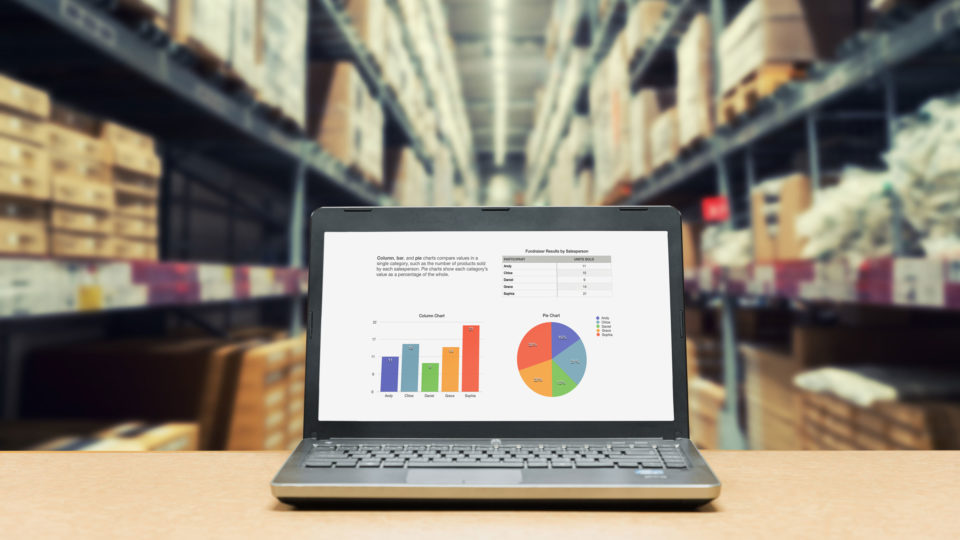Posted On April 5, 2021
In the shipping world, finding the best freight shipping rate can be like searching for a needle in a haystack.
Often, companies without a transportation management system or third-party logistics partner have to manually search for the best freight shipping options and carrier rates. It’s a waste of time and labor, but more importantly, money—because without enough visibility into your supply chain, shipping volume and cargo, the rate quotes will be higher than they should be.
But there’s a better way.
The Importance of Visibility in Negotiating Truckload and LTL Freight Rates
Freight shipping companies (carriers transporting goods domestically and internationally) have numerous variables to consider when estimating shipping rates, from origin and destination to the dimensions and density of the goods being shipped. The more information a company has about its shipments, the better the freight quote will be. Why? Unsure of what potential costs might crop up, freight companies will build in extra charges to ensure their services are covered and protect their bottom line.
On the other hand, knowing the granular details of a supply chain gives freight carriers a more complete picture of what services are needed. More information and data leads to a more accurate—and less padded—freight quote.
What type of data do you need to get the best freight rates?
Essentially, the more visibility and shipment data you have, the better. For shippers that are committed to driving down shipping costs, having the following data is vital:
- Dimensions, density and freight classes of the goods being shipped
- Transit type, including parcel, LTL, truckload or ocean/air freight
- Origin and destination location
- Shipment volume, frequency and delivery time restrictions
- Common accessorial fees, like cargo that requires a liftgate, delivery appointments or residential delivery
Companies utilizing a TMS should already have this level of visibility into their supply chain and be able to extract this data quickly and easily. But for shippers that don’t, a third-party logistics partner (or 3PL) can help.
For example, when Flat World begins working with a company that hasn’t previously used a TMS, we rely on their carrier invoices. Our team conducts an analysis of past carrier charges to create a data set that will get the most accurate—and cost effective—freight quotes going forward.
Freight Shipping Companies, 3PLs & You: A Win-Win Shipping Situation
Using data and visibility to get the best shipping rates isn’t only beneficial for shippers, it’s helpful for carriers as well. Companies that provide comprehensive shipment data make carriers’ jobs easier, both in estimating quotes and executing the shipments. Having a clear picture of a company’s freight needs makes a better business case for carriers to take on that company as a customer—and can lead to more competitive rates, discounts and even better customer service.
A third-party logistics company serving as the liaison between the shipper and freight carrier can make the business relationships even more beneficial for all the companies involved. That might sound surprising. Freight companies and shippers sometimes expect 3PLs to muddy the shipping waters. But the right 3PL partner will coordinate a situation that’s beneficial for the shipper and the carrier.
Take one of the most common examples we see: A major concern for freight carriers is maintaining profitable lane volumes and density. Taking on an LTL shipment that wouldn’t benefit its lane volume isn’t appealing to the freight shipping company. A 3PL can collaborate with multiple freight shipping companies to determine which LTL shipment is most beneficial for which freight shipping company. Shipping different cargo with multiple carriers can result in lower LTL and truckload freight shipping costs.
What 2021 Market Conditions Mean for Truckload and LTL Shipping Rates
Finding the best freight shipment options before 2020 was complicated. And then the pandemic hit.
Disrupting the shipping industry overnight, freight companies around the world began experiencing staffing shortages and equipment backlogs. As online retail sales boomed, carriers saw huge increases in shipment numbers and availability for LTL and truckload cargo space declined. On top of the pandemic, natural disasters caused even more delays, backlogs and shipping nightmares for carriers.
Current forecasts project that shipping and freight services could return to pre-pandemic levels this summer or fall, but in the meantime, access to the best shipping rates without visibility and data will be next to impossible.
Flat World can help ensure your company gets the best shipping rates and carrier services available. Contact us to set up an audit of your shipping history so we can find the best rate options for your parcel, LTL and truckload shipments.

